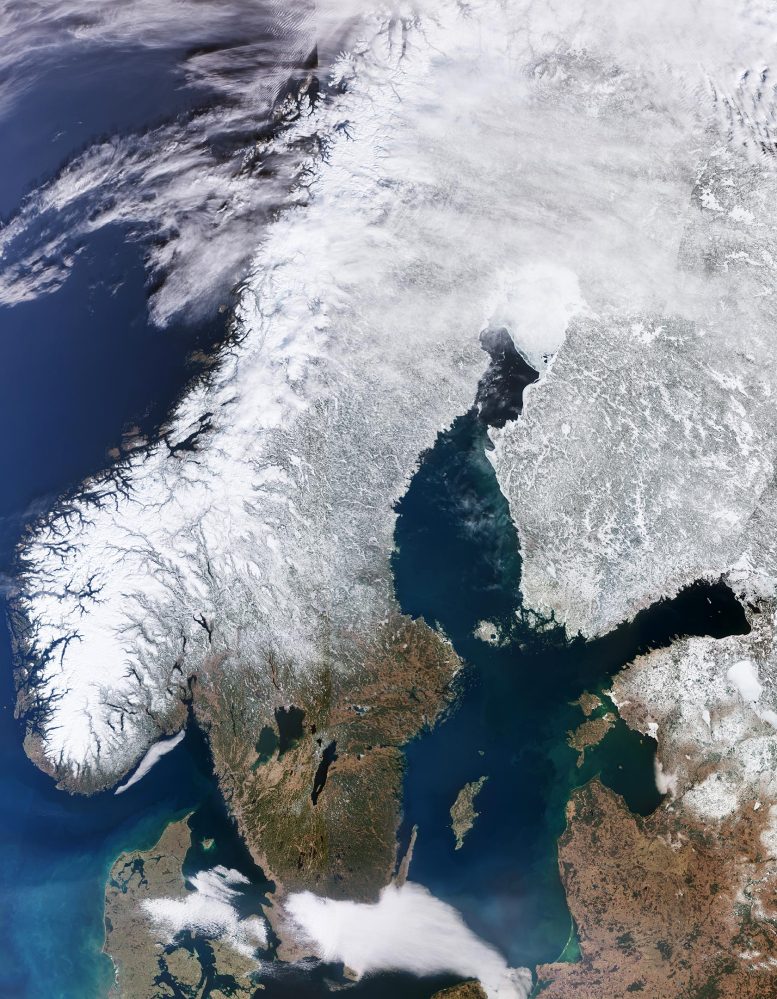
The Copernicus Sentinel-3 mission captured this impressive shot of the almost cloud-free Scandinavian Peninsula on March 20, 2022. Technical note: the image is a mosaic of 2 descending orbits with a difference of around 60 minutes between them, hence the observable striping at the top of the image. Credit: Contains modified Copernicus Sentinel data (2022), processed by ESA, CC BY-SA 3.0 IGO
The Copernicus Sentinel-3 mission captured this impressive shot of the almost cloud-free Scandinavian Peninsula on 20 March.
The Scandinavian Peninsula, which comprises Sweden and Norway, is approximately 1,850 km (1,150 mi) long. It extends southward from the Barents Sea in the north, the Norwegian Sea to the west, and the Gulf of Bothnia and the Baltic Sea to the east. Denmark, Finland, Latvia, and Lithuania are also visible in this week’s image.
Along the left side of the peninsula, the jagged fjords lining Norway’s coast can be spotted from space. Many of these fjords were carved out by the thick glaciers that formed during the last ice age. The largest and deepest fjord on Norway’s coast, called Sognefjord, lies in southwest Norway and is 1,308 m (4,291 ft) deep.
Sweden’s topography consists mainly of flat, rolling lowlands dotted with lakes. Lake Vänern and Lake Vättern, the largest lakes of Sweden, are clearly visible at the bottom of the peninsula. The lakes do not freeze completely during the winter months. To the northeast of the peninsula lies Finland with more than 55 000 lakes – most of which were also created by glacial deposits.
This week’s edition of the Earth From Space program features an impressive shot of the almost cloud-free Scandinavian Peninsula captured by the Copernicus Sentinel-3 mission. Credit: ESA – European Space Agency
During March, much of northern Europe and Scandinavia had been affected by a strong high-pressure weather system, which also allowed for this almost cloud-free acquisition. On 19 March in Tirstrup, Denmark, the atmospheric pressure reached 1051.6 hPa, the highest value ever recorded in March.
Carrying a suite of cutting-edge instruments, Copernicus Sentinel-3 measures Earth’s oceans, land, ice, and atmosphere to monitor and understand large-scale global dynamics. It provides essential information in near-real time for ocean and weather forecasting.
With a focus on our oceans, Sentinel-3 measures the temperature, color, and height of the sea surface as well as the thickness of sea ice, while, over land, the mission maps the way land is used, provides indices of vegetation state and measures the height of rivers and lakes.
The image is also featured on the Earth From Space video program embedded above.









Be the first to comment on "Exploring Earth From Space: Scandinavian Peninsula [Video]"